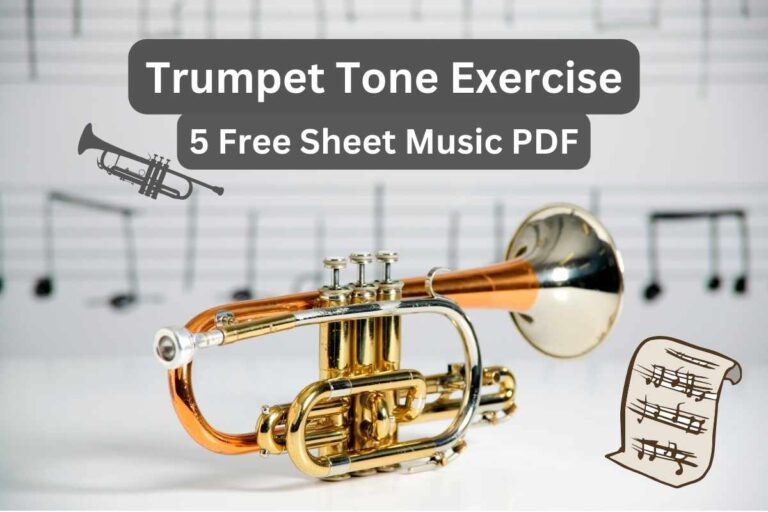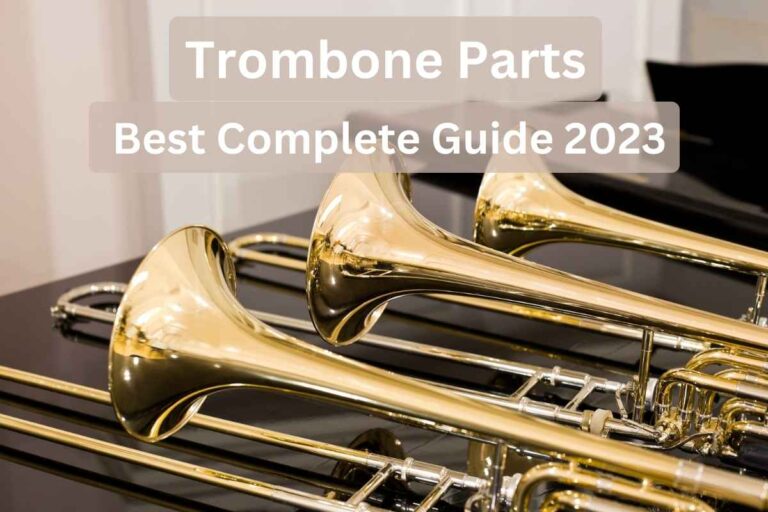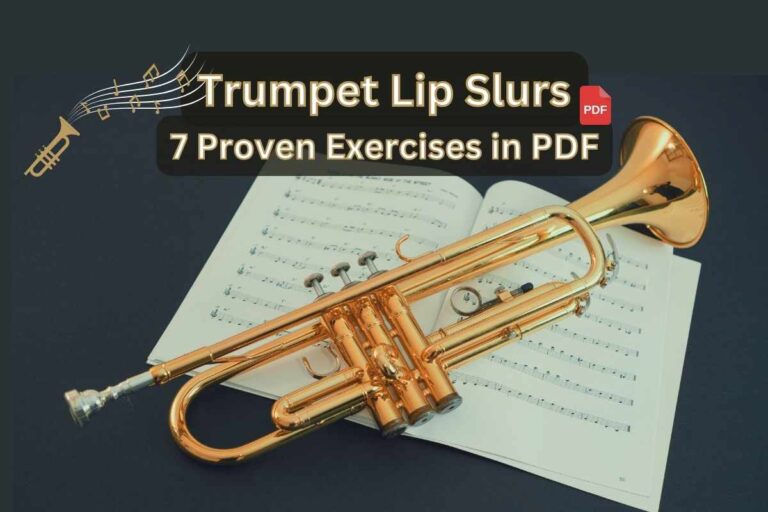Best Trombone Mouthpiece Guide And Depth List 2025
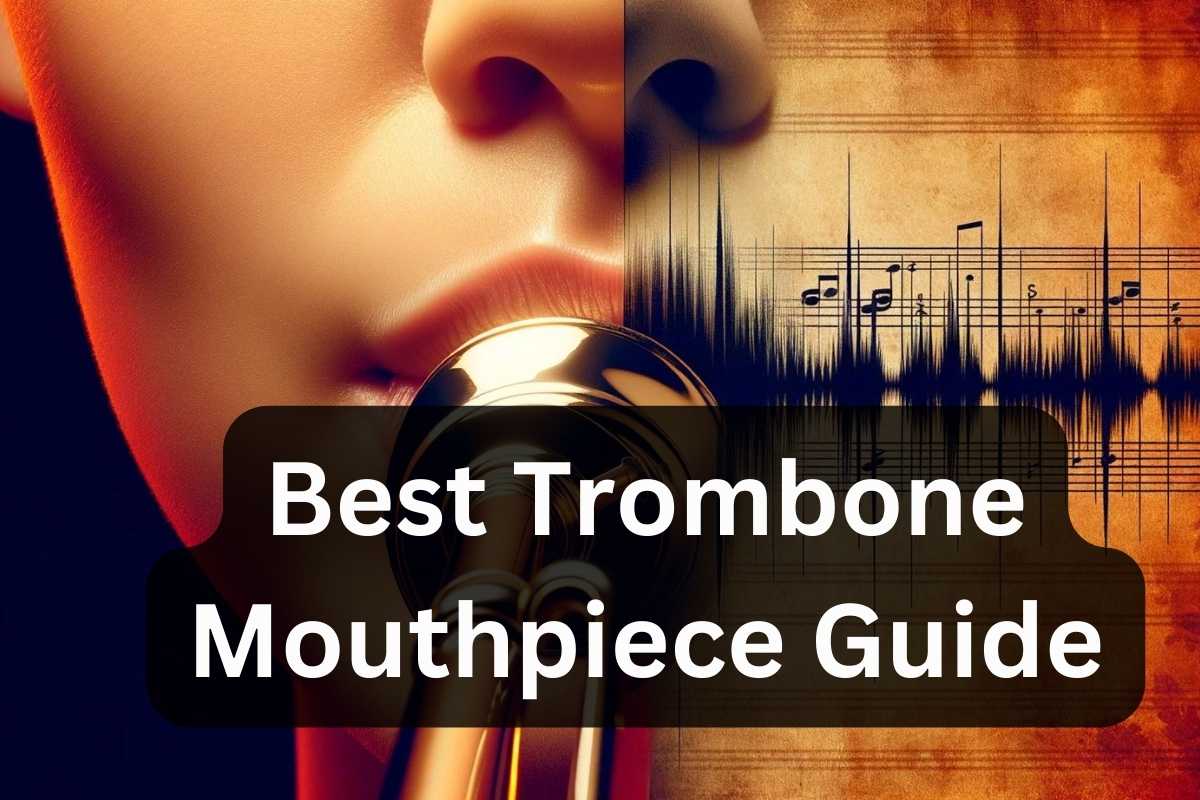
Finding the perfect trombone mouthpiece is a REAL head-scratcher. That’s why I’ve put together this NO-nonsense guide to help you out.
I’m Eugene, and I’ve been dealing with brass for decades. (Yeah, I’m that guy who used to run a network of music stores back in the day.) I’ve sold more trombones than I can count and chatted with everyone from newbies to pro players.
We’re gonna dive into sizes, depths, materials — the whole “shebang”! By the time we’re done, you’ll be a mouthpiece guru, ready to pick the perfect match.
Selecting the Ideal Trombone Mouthpiece
Choosing the right mouthpiece feels like trying to find a needle in a haystack, especially if you’re new to the game. (I remember many kids with parents who came into my shop, totally overwhelmed by all the options. By the time we were done, they were grinning from ear to ear with the perfect match.)
Don’t worry, though — I’ve got your back. In this post, we’ll cover everything from understanding your playing style to decoding all those confusing numbers and letters on mouthpieces.
Trombone Mouthpiece — Most Critical Factors to Consider When Choosing
Alright, let’s break this down step by step
- Player experience — Newbies, stick to standard sizes. Pros, go wild!
- Embouchure strength — Weak chops? Start bigger. Iron lips? You’ve got options.
- Playing style — Jazz cats might want something brighter. Orchestral players think deeper and darker.
- Instrument type — Small bore? Small mouthpiece. Big bore? You guessed it.
(Here’s a pro tip from years of fitting players — start with what feels comfortable, then tweak for sound. Your face will thank you.)
Want to squeeze every ounce of awesome out of your mouthpiece? Try these
- Nail that placement — Center is key. (I once saw a pro place his mouthpiece slightly off-center. Worked for him — but it’s rare.)
- Breathe deep — Fill those lungs! More air = bigger sound.
- Relax those lips — Tension is the enemy. Let ’em buzz freely!!
Trombone Mouthpiece — Top Recommendations for New Trombonists
New to the ‘bone? Check these out
- Bach 6 1/2AL — The classic starter (or Bach 12C for the youngest, with small lips)
- Yamaha 48 — Great for Yamaha horns
- Denis Wick 6BS — If you’re heading for brass band territory
Why these? They’re forgiving, versatile, and won’t break the bank. (I remember this kid, total beginner, who started on a Bach 6 1/2AL. Within a year, he was leading the school band. Right mouthpiece can make all the difference.)
As you improve — DON’T afraid to experiment. Your perfect match might surprise you! (Read my other post with “5 Top Picks And Tips For Best Trombone for Kids“)
Trombone Mouthpiece Parts and Sizes — From Basics to Advanced Knowledge
Alright, let’s break down the anatomy of a trombone mouthpiece. (It’s not as hard as it looks, I promise!!) There are 5 main parts you need to know about
- Rim — This is the part your lips touch. (Think of it as the comfy seat for your chops.)
- Cup — The hollow space right behind the rim. (It’s like a mini echo chamber for your sound.)
- Throat — The narrow opening at the bottom of the cup. (This is where the air zooms through.)
- Backbore — The gradually widening section after the throat. (It’s like a funnel for your sound.)
- Shank — The part that actually goes into your trombone. (It’s gotta fit just right!)
These parts work together like a well-oiled machine to shape your sound. The rim affects comfort, the cup influences tone color, the throat controls airflow, the backbore fine-tunes projection, and the shank ensures a proper fit.
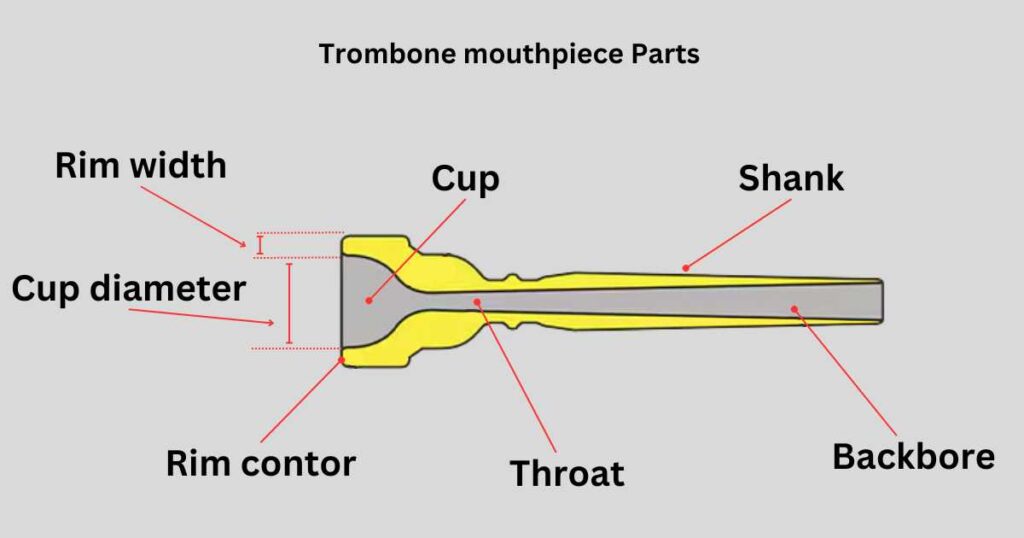
[Annotation: Insert simple diagram illustrating mouthpiece parts here]
Trombone Mouthpiece Throat and Throat Size — Finding Your Perfect Fit
Let’s zoom in on the throat. (This tiny hole makes a BIG difference!) The throat is basically the gateway between your lips and the trombone. Its size affects 3 main things
- Tone — A smaller throat (around 6.5mm) gives a brighter sound, while a larger one (up to 7.5mm) produces a darker tone.
- Response — Throats are more responsive, especially in the high range. Larger throats can feel sluggish (at first) but offer more power.
- Volume — Bigger throat = more potential volume. (But it also requires MORE air!)

So, how do you choose? Here’s a quick guide
- Beginners — Start with a medium throat (~ 6.90mm) as a good all-rounder.
- Jazz players — Often prefer smaller throats (< 6.80mm) for that bright, punchy sound.
- Orchestral players — Might go for larger throats (> 7mm) to blend with the ensemble.
(Remember, these are just starting points — Don’t be afraid to experiment!)
Mouthpiece Cup and Cup Depth — How They Shape Your Tone
Now, let’s talk about the cup. (This is where the magic happens!) The cup’s shape and depth have a huge impact on your sound. Here’s the lowdown
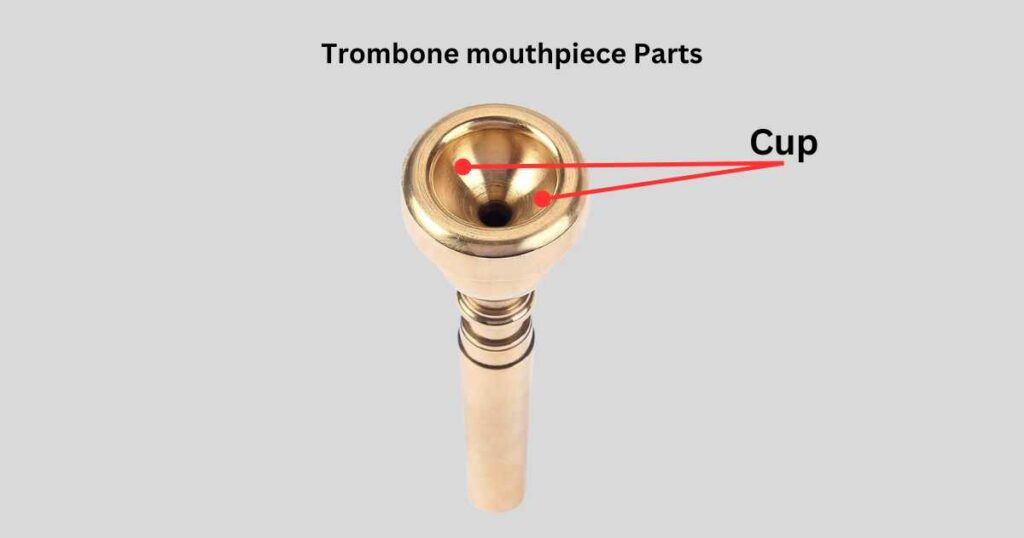
Cup Shapes
- V-shaped — Bright and focused tone, great for lead playing.
- U-shaped — Warmer sound with more body, good all-purpose choice.
- C-shaped — In between V and U, offers a balance of brightness and warmth.
Cup Depths
- Shallow (around 25mm) — Bright, projecting sound, easier high range but less full low notes.
- Medium (27-29mm) — Balanced tone across all registers, the most versatile option.
- Deep (30mm+) — Rich, dark tone. Fuller low range but makes high notes “trickier”.
Pro tip: Cup depth and shape work together. A deep V-cup sounds different from a deep C-cup!
Choosing Your Cup
- Jazz (commercials) often prefer shallower cups for that bright, cutting tone.
- Classical (orchestral) tend towards medium to deep cups for a richer sound.
- Your face MATTERS — Players with thin lips might prefer shallower cups, while fuller lips handle deeper cups more easily.
Remember, there’s no one-size-fits-all solution. (I’ve seen amazing players rock all sorts of cup combinations!)
Rim and Rim Diameter and Sizes — Balancing Comfort and Playing Flexibility
The rim is where your lips meet the mouthpiece. (It’s like choosing the right pillow for a good night’s sleep!) Here’s what you need to know
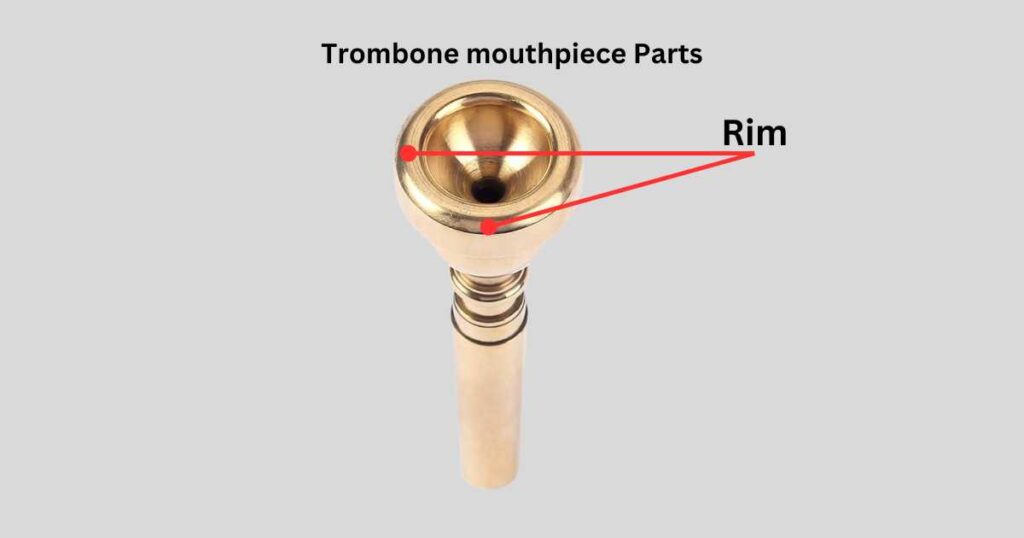
Rim Shape
- Rounded — Most comfortable, great for endurance.
- Semi–rounded — Balance of comfort and precision.
- Flat — Offers more control but can be less forgiving.
Rim Width
- Narrow — More flexibility, easier for fast passages.
- Wide — More stability, better for long notes and endurance.
Rim Diameters
- Tenor Trombone — Typically 24.5mm to 26.5mm
- Bass Trombone — Usually 26.5mm to 28mm (Discover “5 Best Bass Trombones”)
(Fun fact: Some pros use huge rims. I’ve seen bass trombone players rocking 29mm+ rims!) Choosing Your Rim
- Comfort is key! An uncomfortable rim will ruin your playing no matter how “good” it is.
- Consider your lip shape. Thinner lips often prefer narrower rims.
- Think about your repertoire. Lots of high playing? A narrower rim will help.
(Pro tip: Don’t be afraid to mix and match. Some players use different rims for different styles!)
Backbore and Backbore Type
The backbore is like the secret sauce of the mouthpiece design. (It’s subtle, but it makes a big difference!) Here’s what you need to know
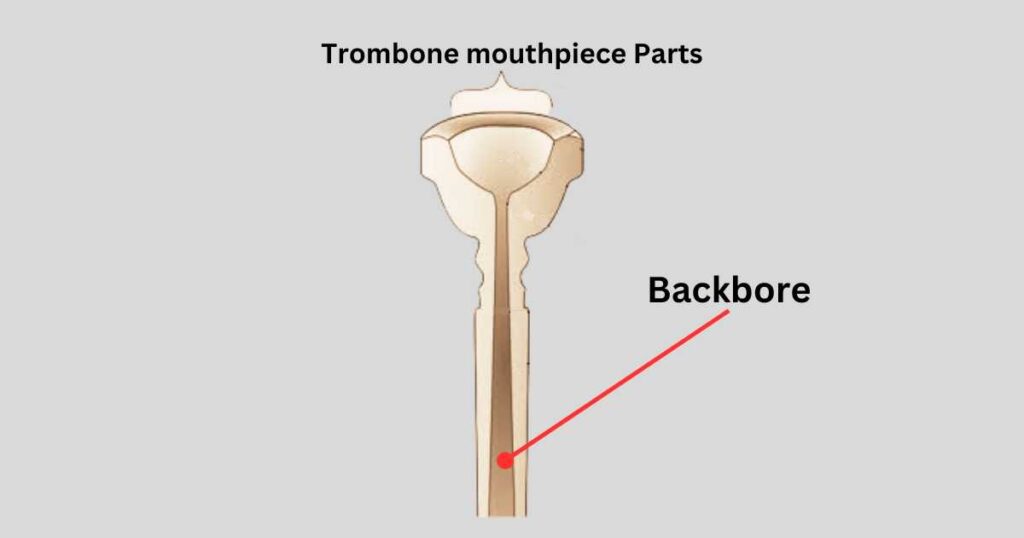
Backbore Types
- Standard — All-purpose design, good balance of tone and response.
- Large — Opens up the sound, improves low range.
- Extra-large — Even more open sound, but is harder to control.
How Backbore Affects Your Playing
- Tone Color — Larger backbores generally produce a darker tone.
- Projection — A well-designed backbore can help your sound carry further.
- Intonation — The right backbore can improve your overall pitch accuracy.
Choosing Your Backbore
- Consider your instrument. Large-bore trombones often pair well with larger backbores.
- Think about your playing style. Jazz players might prefer a more focused backbore.
- Experiment!! Backbore effects can be subtle, so try a few options.
(Remember, the backbore works with the other mouthpiece parts. It’s all about finding the right combination!)
Shank and Shank Type
The shank is the part that actually goes into your trombone. (It’s gotta fit like a glove!) Here’s what you need to know

Shank Types
- Small Shank — Fits most student and small-bore tenor trombones.
- Large Shank — For large-bore tenors and bass trombones.
Shank Facts
- Small shanks are about 11.7mm in diameter.
- Large shanks are about 13.9mm in diameter.
- Some mouthpieces come with interchangeable shanks. (Handy if you play multiple horns!)
Choosing Your Shank
- Check your instrument! Using the wrong shank size will damage your horn.
- If you’re not sure, ask your teacher or a repair tech.
- Some players use adapters, but it’s generally BEST to use the correct shank size.
(Pro tip: Keep your mouthpiece clean! A dirty shank can get stuck in your horn.)
Material Matters — Brass vs. Plastic Mouthpieces — Pros and Cons
Let’s talk materials. (It’s not just about looks!) Here’s a breakdown of brass vs. plastic
Brass vs. Plastic Trombone Mouthpiece
| Pros | Cons | |
| Brass Mouthpieces |
|
|
| Plastic Mouthpieces |
|
|
Other Materials
- Silver-plated — Some players swear by the feel and tone.
- Gold-plated — Expensive, but can offer a unique sound color.
- Stainless Steel — Super durable, but not as common.
Choosing Your Material
- Consider your budget. Plastic is great for beginners or as a backup.
- Think about where you play. Marching band? Plastic might be your friend. (Or if you have allergies)
- Try both! Some players keep brass and plastic mouthpieces for different situations.
(Expert opinion: Most trombonists love brass mouthpieces, but always keep a plastic one in a bag for emergencies!)
Best 10 Trombone Mouthpieces
Alright, folks, buckle up! We’re about to dive into the crème de la crème of trombone mouthpieces. (I’ve handpicked these 10 bad boys based on years of experience and feedback from some musicians and experts.)
Trombone Mouthpiece Chart
| Model | Ideal Player Level | Best Suited Styles | Rim Diameter (mm) | Cup Depth | Throat Size | Backbore Type | Shank Type |
| Bach 6 1/2AL | Beginner to Intermediate | Concert band, general playing | 25.40 | Medium | 6.89 | Medium | Large |
| Bach 5G | Intermediate to Advanced | Orchestral playing, rich ensemble work | 25.65 | Medium-Deep | 6.89 | Medium-Large | Large |
| Bach 12C | All levels | Jazz, high parts in ensembles | 24.90 | Shallow | 6.53 | Small | Small |
| Bach 7C | Players transitioning from trumpet | Extreme high range, specialized parts | 24.76 | Shallow | 6.50 | Small | Small |
| Schilke 51 | Intermediate to Advanced | Players who find Bach rims uncomfortable | 25.65 | Medium | 6.86 | Medium | Large |
| Yamaha 48 | Beginners to Intermediate | Players who prefer Yamaha's feel | 25.40 | Medium | 6.89 | Medium | Large |
| Denis Wick 6BS | Intermediate to Advanced | British-style brass band playing | 25.40 | Medium-Deep | 6.89 | Medium-Large | Large |
| Schilke 47 | Advanced players | Players needing style flexibility | 25.15 | Medium-Shallow | 6.75 | Medium-Small | Large |
| Greg Black 4G-5G | Advanced to Professional | Players seeking extra edge in sound | 25.90 | Medium-Deep | 7.00 | Custom | Large |
| Doug Elliott | Players who know exactly what they want | Fine-tuning perfect setup | Varies | Varies | Varies | Varies | Large |
Now, this list covers a wide range of playing styles and skill levels. You’ll find some “tried-and-true” classics alongside some hidden gems that surprise you. Remember, tho — what works for one player might NOT work for another. It’s all about finding your perfect match.
1. Bach 6 1/2AL
Bach 6 1/2AL is like the Swiss Army knife of trombone mouthpieces. It’s versatile, reliable, and a great starting point for many players.
Bach 6 1/2AL – Check Price
Characteristics:
Medium cup, balanced tone
Ideal for:
Concert band, general
Best for:
Beginners to intermediate
Personal take
I’ve lost count of how many of these I’ve sold over the years. It’s a solid choice that rarely disappoints.
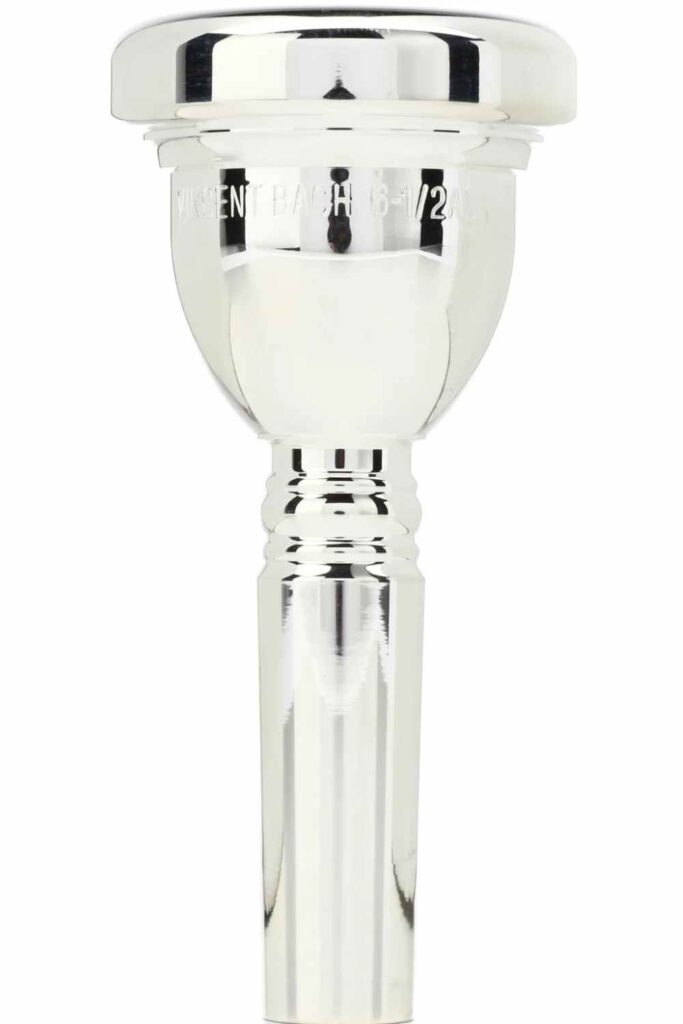
Bach 6 1/2AL is a popular all-around mouthpiece with a rim diameter of 25.40mm and a medium cup depth. It features a standard throat size that provides a good balance of resistance and free-blowing characteristics. This mouthpiece produces a warm, full-bodied tone with good projection.
This bad boy is perfect for beginner to intermediate players who want a well-rounded sound. It shines in classical and orchestral settings, but can hold its own in jazz too.
2. Bach 5G
Bach 5G is the workhorse of the trombone world. It’s like that dependable friend who’s always got your back.
Bach 5G — Check Price
Characteristics:
Orchestral playing, rich ensemble work
Ideal for:
Slightly larger than 6 1/2AL, fuller sound
Best for:
Intermediate to advanced players
Personal take
(I’ve seen pros swear by this mouthpiece. It’s got a sweet spot that just works for a lot of players.)
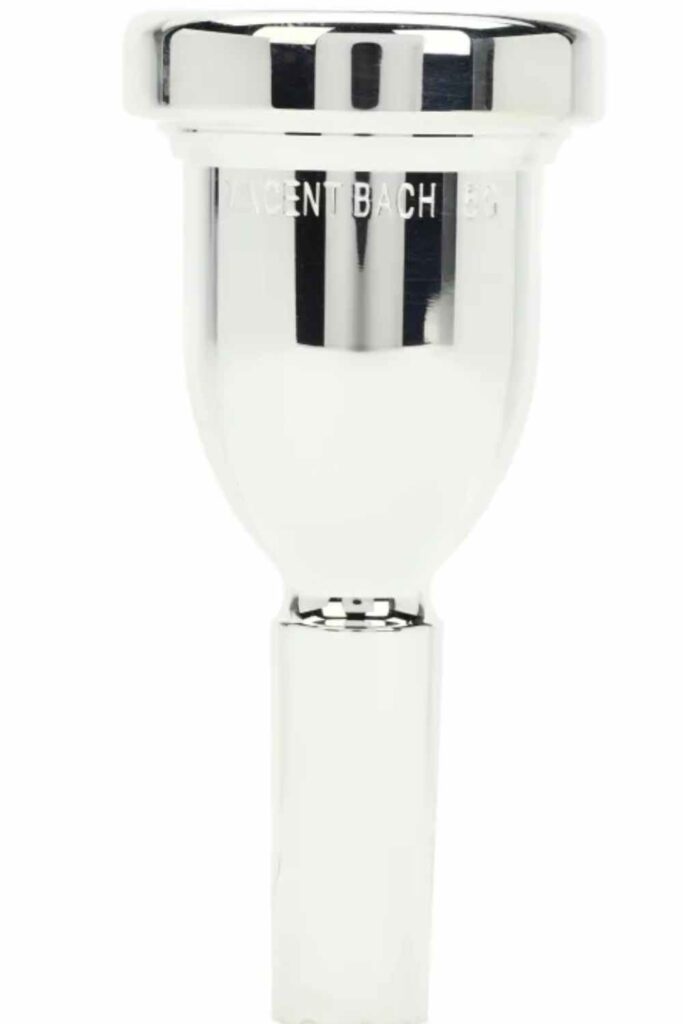
Bach 5G is a popular choice for large bore tenor trombones. It’s got a slightly bigger cup (than 6 1/2AL), which gives you a fuller, richer tone. The rim (25.65mm) is comfortable for long practice sessions or performances.
This mouthpiece is for intermediate to advanced players who want a warm, robust sound. It’s a beast for orchestral work and symphonic band playing.
3. Bach 12C
Bach 12C is your ticket to the high range. It’s like strapping a rocket to your high notes.
Bach 12C — Check Price
Characteristics:
Smaller cup, brighter tone
Ideal for:
Players focusing on high range
Best for:
Jazz lead, high parts in ensembles
Personal take
(I once had a customer hit a double high C with this bad boy. Thought the windows would shatter!)

Bach 12C is a small but mighty mouthpiece. It’s got a shallow cup and a small rim (24.90mm), perfect for hitting those “stratospheric” high notes. DON’T let its size fool you — it still produces a decent sound in the lower register.
This little guy is great for beginners and intermediate players, especially those with smaller lips. It’s a champ in jazz and commercial settings where you need to wail in the upper register.
A Redditor shared, “I keep a 12C in my case for those crazy high jazz charts. It’s a lifesaver!” [1] Another said, “It’s not just for jazz – I use it for pep band and it cuts through like a knife.” [2]
4. Bach 7C
Bach 7C is a bit of an oddball in the trombone world, but it’s got its fans.
Bach 7C — Check Price
Characteristics:
Small and shallow, very bright
Ideal for:
Players transitioning from trumpet
Best for:
Extreme high range, specialized parts
Personal take
(Not my go-to recommendation, but I’ve seen it work wonders for some players. It’s all about finding what clicks for you.)
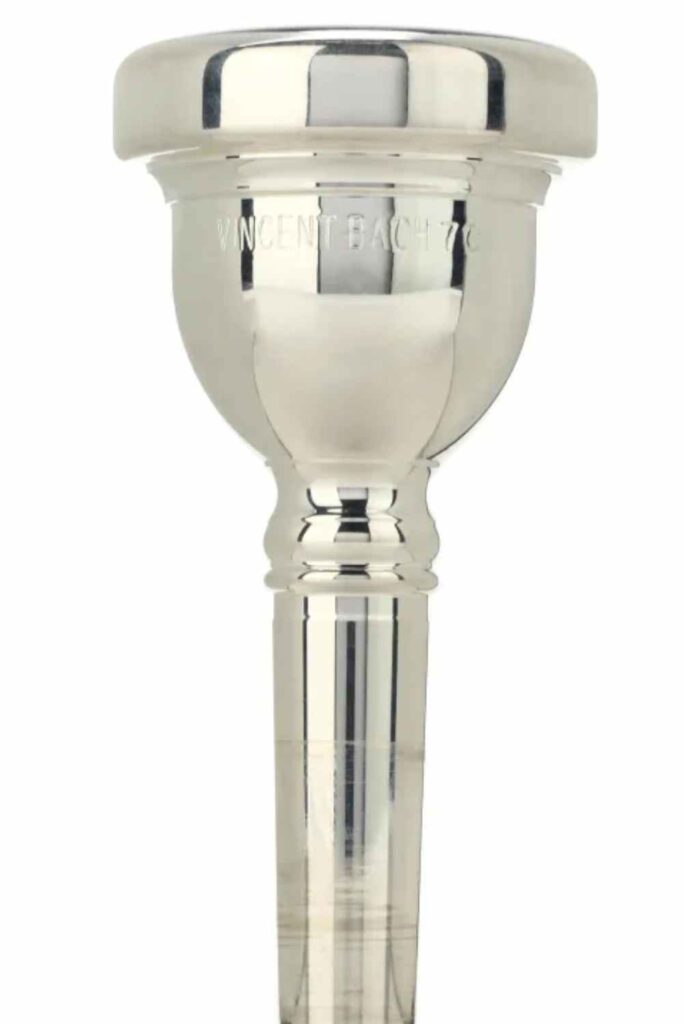
Bach 7C has a rim diameter of 25.20mm, placing it between the 12C and 6 1/2AL in size. It provides a comfortable middle ground for players who find the 12C too small or the 6 1/2AL too large.
This mouthpiece is perfect for beginners and intermediate players who want something that can do it all. It’s equally at home in a school band, jazz ensemble, or community orchestra.
5. Schilke 51 For Low Instruments
Schilke 51 is the cool cousin of the Bach 5G, but with its own unique flair.
Schilke 51 — Check Price
Characteristics:
Similar to Bach 5G, but with Schilke’s unique rim
Ideal for:
Intermediate to advanced players
Best for:
Players who find Bach rims uncomfortable
Personal take
(I’ve had customers swear this mouthpiece changed their life. It’s all about that rim comfort.)
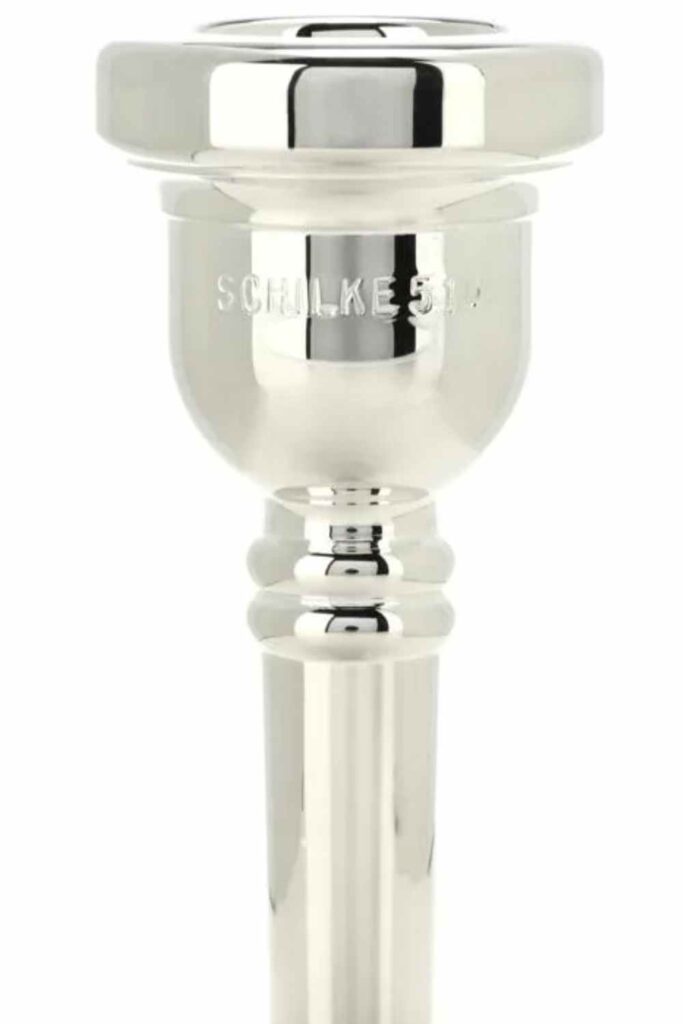
Schilke 51 is a beast of a mouthpiece. It’s got a medium-deep cup and a wider rim (25.40mm) that gives you a big, bold sound. The backbore is designed to give you maximum resonance and projection.
This mouthpiece is for intermediate to advanced players who want to fill the room with sound (across all registers). It’s killer for orchestral work, especially if you’re playing second or third trombone.
6. Yamaha 48
Yamaha 48 is Japan’s answer to the Bach 6 1/2AL and It’s got that “Yamaha precision” we all know and love.
Yamaha 48 — Check Price
Characteristics:
Similar to 6 1/2AL, but with Yamaha’s touch
Ideal for:
Beginners to intermediate players
Best for:
Players who prefer Yamaha’s feel
Personal take
(These came with a lot of Yamaha horns I sold. Solid performers, especially for the price.)

Yamaha 48 is a solid all-rounder. It’s got a medium cup depth and a comfortable rim that works for a lot of players. The design helps with flexibility across all registers.
This mouthpiece is great for intermediate players looking to step up their game. It’s versatile enough to handle classical, jazz, and everything in between.
7. Denis Wick 6BS
Denis Wick 6BS is a bit of a wild British card.
Denis Wick 6BS — Check Price
Characteristics:
Unique cup shape, focused sound
Ideal for:
Intermediate to advanced players
Best for:
British-style brass band playing
Personal take
(I remember a customer who swore by this for his brass band gigs. Said it cut through the ensemble like a hot knife through butter.)

Denis Wick 6BS is a small bore specialist. It’s got a shallow cup and a small rim (25.40mm) for “high-flying” jazz licks. The ‘S’ stands for ‘small’, so Denis Wick produce them specifically for small bore trombones.
As a British-style mouthpiece, it has a slightly different cup shape and backbore design than American mouthpieces. This results in a rich, dark tone with excellent projection and clarity.
This mouthpiece is ideal for intermediate to advanced players who specialize in jazz or commercial playing. It’s a go-to for lead trombone players in big bands
8. Schilke 47
Schilke 47 is like the Schilke 51’s smaller sibling
Schilke 47 — Check Price
Characteristics:
Slightly smaller than Schilke 51, brighter tone
Ideal for:
Advanced players looking for flexibility
Best for:
Players who need to switch between styles quickly
Personal take
(Had a jazz player who doubled on orchestra gigs swear by this. Said it let him switch gears without switching mouthpieces.)
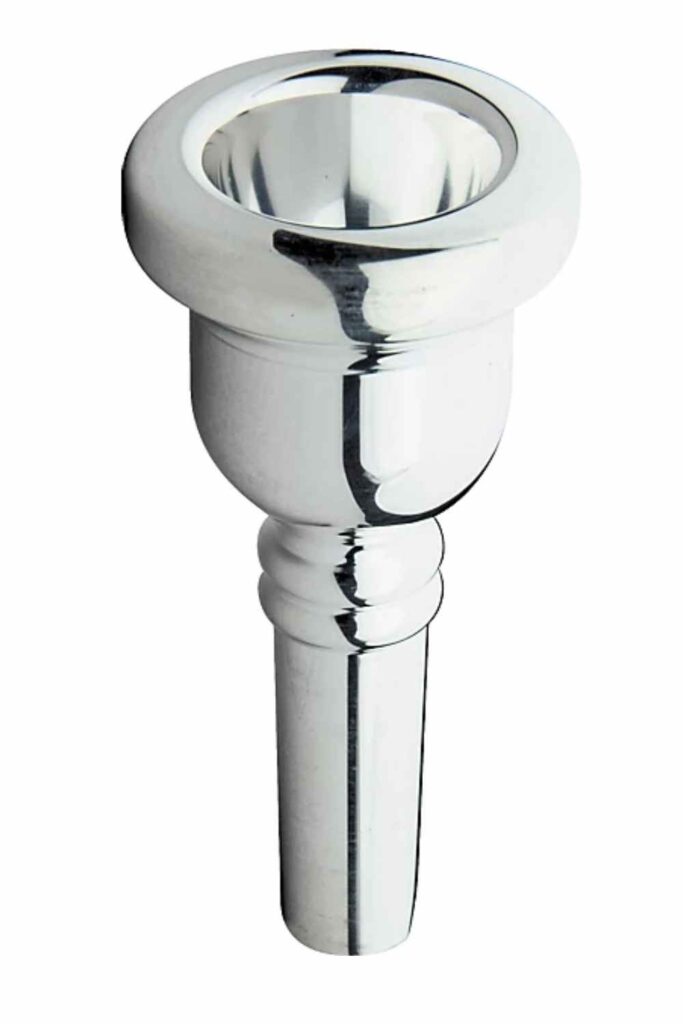
Schilke 47 is the little brother of the 51 with a slightly smaller cup (25.15mm) and rim, for players who find the 51 too big. The design still gives you a FULL, resonant sound — great for a big sound without the bulk of larger mouthpieces
One potential drawback is that you may find it less comfortable for playing in the extreme low register than larger mouthpieces.
9. Greg Black 4G-5G
Greg Black mouthpieces are the custom “hot rods” of the trombone world. They’re NOT for everyone, but those who love ’em — LOVE ’em!!
Greg Black 4G-5G — Check Price
Characteristics:
Precision-made, unique designs
Ideal for:
Advanced to professional players
Best for:
Players looking for that extra edge in their sound
Personal take
(These are pricey due to the custom nature, but they TRANSFORM a player’s sound. It’s like unlocking a new level in a video game.)
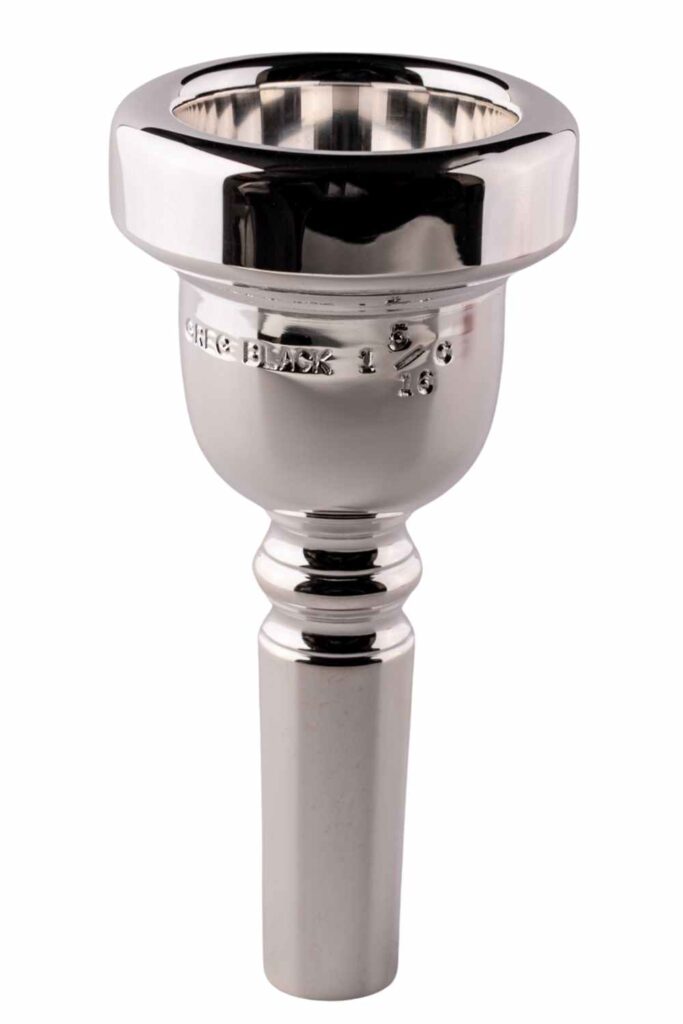
The Greg Black 4G-5G are a custom mouthpiece with a 25.75mm rim diameter and a medium-deep cup. It’s got a UNIQUE cup design that combines elements of both 4G and 5G sizes for great flexibility and a rich tone.
10. Doug Elliott Custom Series Mouthpieces
Doug Elliott mouthpieces are the chameleons of the trombone world. They’re all about customization
Doug Elliott — Check Price
Characteristics:
Modular design, mix-and-match parts
Ideal for:
Players who know exactly what they want
Best for:
Fine-tuning your perfect setup
Personal take
These are for the tinkerers out there. I’ve seen players spend hours swapping parts to find their perfect combo.)
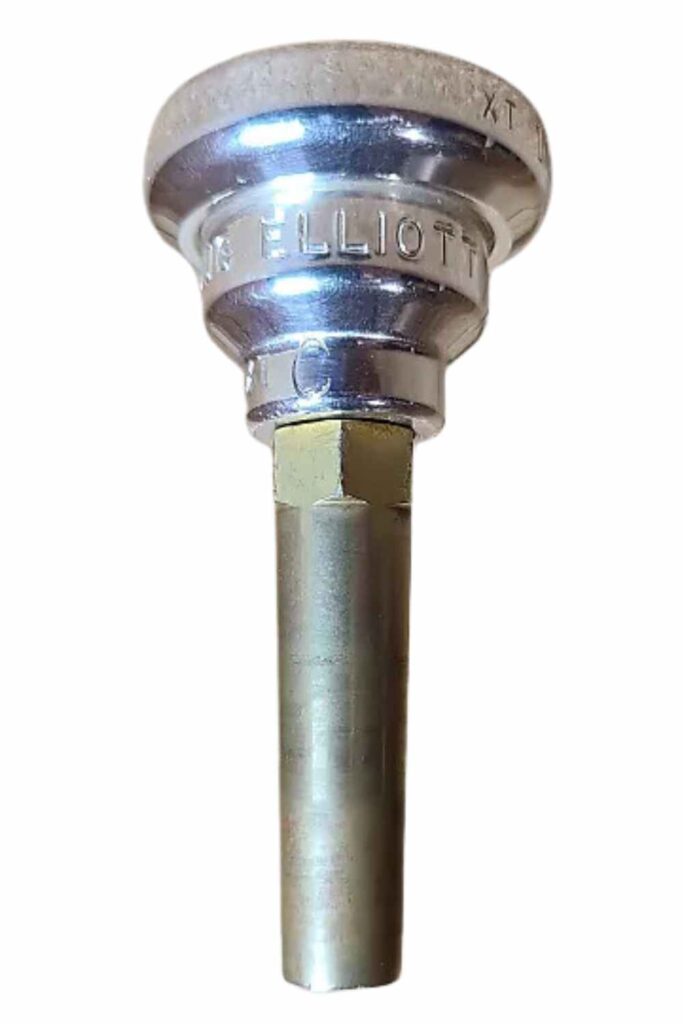
Doug Elliott mouthpieces are the ultimate in customization. They’re modular, meaning you can mix and match different rims, cups, and backbores to create your perfect setup.
These mouthpieces are for advanced players who want TOTAL control over their sound. They’re great for pros who need different setups for different gigs.
Many professional players, including members of top orchestras and jazz ensembles, use Doug Elliott mouthpieces. However, the wide range of options is overwhelming for some players, and the modular system requires more maintenance than traditional one-piece mouthpieces.
Conclusion — Helpful Trombone Mouthpiece Tips
Alright, trombonists, let’s wrap this up! We’ve covered a lot of ground here — from the basics of mouthpiece design (and parts) to picking out your perfect match. Remember, finding the right mouthpiece is all about what works for YOU and your unique playing style.
DON’T afraid to experiment with different mouthpieces!! (I’ve seen players completely transform their sound just by switching to the right mouthpiece.) But also keep in mind that no mouthpiece is a magic fix — consistent practice is still the key to improvement. (Still learning to play? Read my “Comprehensive Trombone Guide for Beginners To Play in 2025“)

